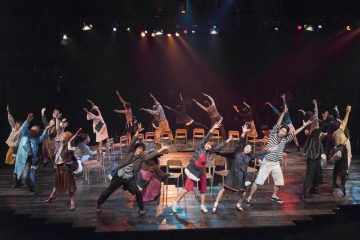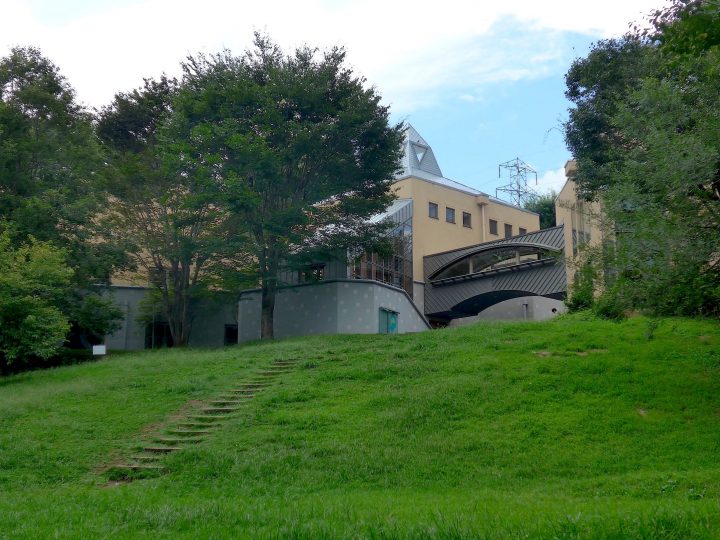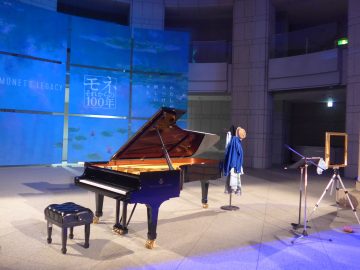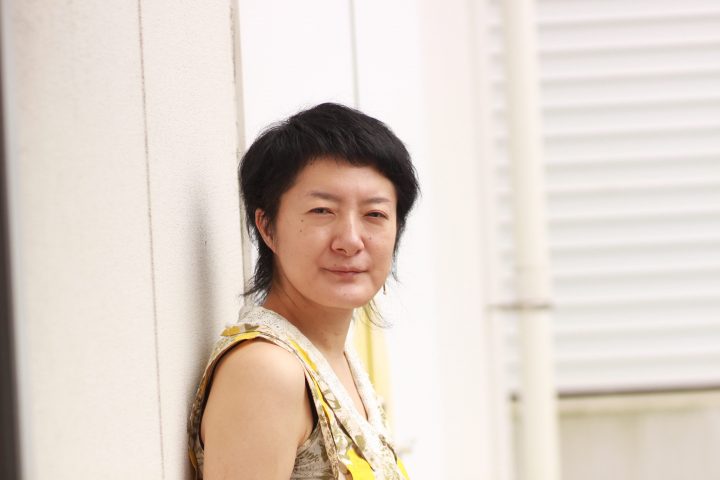"Why everyone loves actor Kimio Takeya" — A look into his charm and lovable clumsiness —
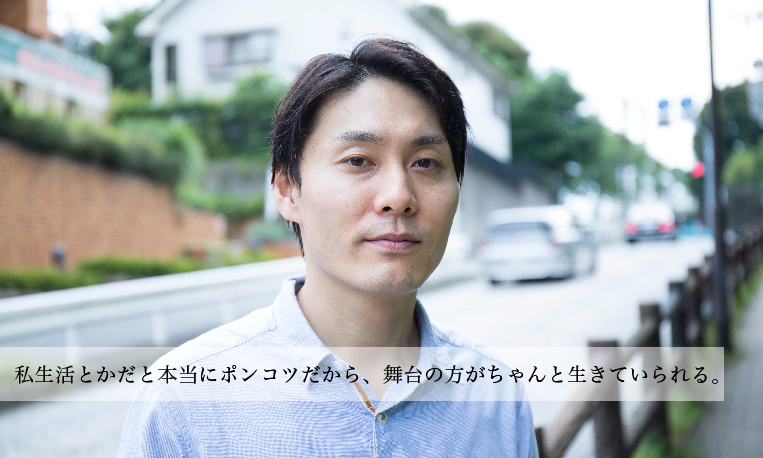
Actor Takeya Kimio is currently receiving a steady stream of love calls from many up-and-coming directors. Upon hearing that Takeya had won the Actor Award at the 2013 CoRich Performing Arts Awards, MAGCUL.NET immediately decided to interview him. This is a long interview with a friend from his university days who knows Takeya well, from the onstage personality to the (self-proclaimed) clumsy Takeya in his private life, about his stories from the award-winning Kinoshita Kabuki production Kurozuka and his journey from childhood to becoming an actor.
"Why is the actor Kimio Takeya so loved by everyone?"
I hope that this interview will help convey its charm to more people. In addition, the "Magcal version of Kimio Takeya, the Impersonation Show," which was specially performed for this occasion, will also be released at the same time! Please enjoy this after the interview.
Venue cooperation: Steep Slope Studio
Interview: Tomoe Ooshima Photography: Masanobu Nishino Text: Akiko Inoue
- About winning the CoRich Performing Arts Award 2013 -
-Congratulations on winning the CoRich Performing Arts Award for Actor.
thank you.
-How are you feeling right now, honestly?
The CoRich Performing Arts Award is a performing arts festival held online, and about 100 plays are submitted from all over the country, and the judges narrow it down to 10 plays. Among them, the Kinoshita Kabuki play "Kurozuka," which I performed in, won the Grand Prix, and I also received the Actor Award... So I got the opportunity to perform it again within two years. I'm very happy that this opportunity will allow people who couldn't see it last time to see "Kurozuka." Also, I've been an actor for about 14 years, like muddy water (bitter smile), and I've not been very well-received, so I'm glad I was able to achieve one good result.
-That's really great!
But rather than the result, I feel I was glad to have been given the role of this ogre. I was really glad to have found a role that I could devote myself to. After two months of doing a perfect copy of a Kabuki play, I broke it down in about two to three weeks and worked on making it into a modern play. I went to the chiropractor every day to get my knees fixed before going on stage, and I even dyed my hair completely white.
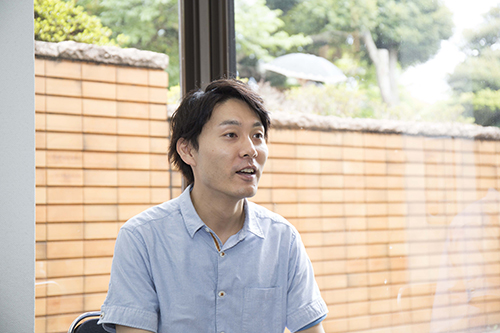
-You've done a lot of different stage productions up until now, but was it difficult to try your hand at Kabuki?
I've always wanted to do Kabuki. Sugihara-san (Kinoshita Kabuki's Kunio Sugihara) had asked me to do it a few times, but the timing never seemed to work out. But this time, the timing worked out, so I decided to do it.
- On stage, there were scenes where you were cornered, and your expressions were intense, so I think the audience was watching thinking that it must have been difficult for you too.
It was physically tough, but since Kabuki has a set form, it wasn't tough mentally at all. In normal theater, there are all kinds of ways of doing things.
-Because you have to act based on your emotions.
That's right. But there is only one correct answer in Kabuki. I compared the traditional arts of the Ichikawa family with those of the previous generation and the current generation, and decided in consultation with the director, like "Let's do this here." I had a Nihon Buyo master train me for about two months, but in the end, about three weeks before the performance, I threw everything away. For example, the music suddenly changed from Nihon Buyo songs to Disney songs.
-Is there a scene that you particularly liked, or one that you thought was worth watching?
The kabuki play "Kurozuka" is a simple story of good versus evil, with the monk being good and the old woman being bad, but this time, we delve deeper into why the old woman became a demon and portray her emotions. The moonlight lighting that illuminates the lonely old woman who has lived with the burden of her sins is simple, and the lighting is very beautiful, as if it is watching over the old woman, and it really moved me emotionally.
-I definitely like the scene where the moon and the old lady dance. It was a scene where they were both involved in the rap.
That's right. The lonely old woman sees her own reflection in the moonlight, and dances with that shadow. So the lighting was designed so that all the shadows would be cast, like if you were here, you'd get this shadow, if you were here, you'd get that shadow. So she dances holding a cane, and when she takes it behind her, it gets cast into the shadow, and that shadow gets projected large behind her like an ogre...
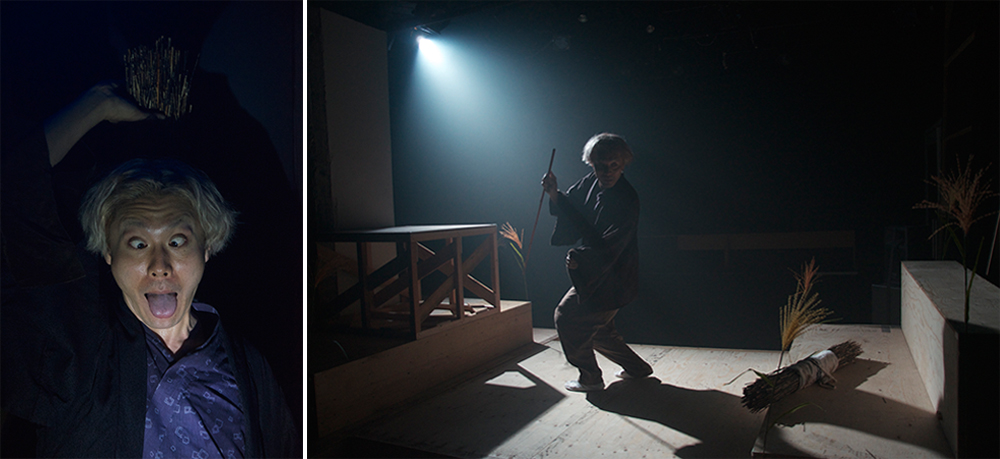

From a documentary photograph of the Kinoshita Kabuki performance "Kurozuka" ©Ryuichiro Suzuki
-It must have been difficult, but I'm looking forward to the re-run.
It was hard, but that was fun. It's not that I was worried about the award, but that it was hard, and that was fun. But I was really glad to hear from critics and other people that the work was good...yeah.
There were also a lot of comments on Twitter like, "Takeya-san is amazing."
All I did was move to avoid falling off the boat...and it's all thanks to you all.
- The road to becoming an actor: from elementary school to high school -
-Next, I would like to know when you first encountered acting, so I would like to hear a little about your childhood and what led you to that point.
When I received the proposal for this interview, I thought about my upbringing, and I didn't live my life with theater in mind until I was about 19 years old. But when I thought about it, I realized that I had a pretty good path ahead of me... For example, my parents have hardly ever seen my plays, but when I first told them about the award I received, they said, "Now that I think of it, you used to dance with a fan at your Shichi-Go-San ceremony." Apparently my maternal grandfather wanted to be an actor. My mother was actually a teacher in Yokohama and the advisor for the drama club, so I remember being made to make props when I was little... I had quite a few experiences that were related to theater. Also, when I was little, I was left home alone after playing outside, so when I came home, I would watch reruns of dramas like "New York Love Story" by myself. When I think about it, everyone does Tamura Masakazu impersonations now, but back then, I was one of the first to do them by myself when I was in the lower grades of elementary school. (laughs)
-You were born in Oita, but where in Kanagawa did you grow up?
My grandmother was from Totsuka, and we lived in Asahi Ward, then we moved to Ebina, and then we lived in Zama. When I was in Ebina, from junior high school to high school, I liked art, so I wanted to go to an art university. I won the grand prize at something like the Kanagawa Prefecture Boys and Girls Painting Competition. By the way, that was the award before this CoRich award (laughs). That painting won the silver prize at the international exhibition "8th Kanagawa Biennale" and toured around the country. At that time, I received the Ebina Cultural Promotion Award. I was invited to Ebina City Hall, had my photo taken, and was given an Adidas bag (laughs). Looking back, the painting I drew at that time was a picture that made me feel like I was sick. I imitated the Lassen paintings that were popular at the time, and drew fish in great detail.
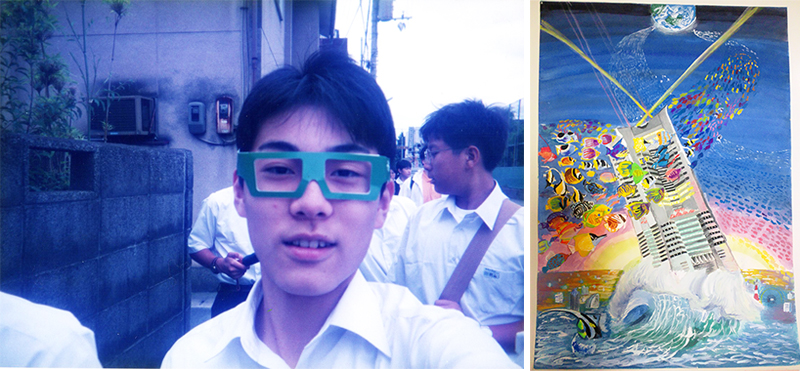
Left: Takeya at the time / Right: The work that won the Grand Prize
But I got the award half-heartedly, so I didn't put in any effort after that. In the end, I thought I had to become a proper company employee, so I went to a normal public high school. I thought about going to a university for art, but I ended up going to Kanagawa University. Then, I thought that Kanagawa University is in Shirakura, so it would be easy to go to Shibuya and Yokohama... but then I realized that the department I applied to was in Isehara, so I dropped out (laughs). I took a year off and aimed for Waseda, but I didn't put in any effort either, and ended up going to Senshu University.
- Admiring Kazama Morio: My college days -
So, I happened to bump into an old friend on the train on my way to school, and heard that he was in a club at Waseda, so I decided to go to Waseda right away. I thought it was a tennis club or something, but it was a drama club (laughs). And the moment I opened the door, a scary senior said to me, "This is not the place for you!", and I remember being surprised. Then, suddenly, I was given a script and made to read it, and I was made to do physical training. The physical training seemed to have made my body move quite a bit, and I was suddenly cast in a play, with a feeling like, "We don't have enough people, so you have to appear in my play." That scary person was Kohei Narumi from the Seventh Theater, and I went to Waseda every day with the feeling that I wanted to be recognized by this bearded man (Narumi-san), or rather, to make him understand.
-Is that how you met the Waseda University drama club, Gekidan Mori?
That's right. But when I tried it, I think it was a good fit. My experiences up until then and when I was little, I liked Kazama Morio because of a TV drama I saw.
Kazama Morio also went to Waseda University, right? Maybe he wrote "Stewardess Story"?
No, I don't think many people know this, but at the time, there was a show called "Good Morning" on the air (laughs). "Morning" is not about morning, but about mourning, and it was a comedy-style drama set in a funeral home, and the eldest son was played by Masao Kusakari, and the useless second son was played by Morio Kazama, and it was really funny. Morio Kazama.
-But it's amazing that you had the sensibility to think that Kazama Morio was really interesting as a junior high school student... So your first direct encounter with theater was in the early stages of your first year at university after taking a year off to study for entrance exams.
Yes, at that time we didn't have enough people so we were doing about three shows at the same time. We didn't have a practice space so we practiced at Toyama Park, and it wasn't fun so we got naked and ate dirt... (laughs)
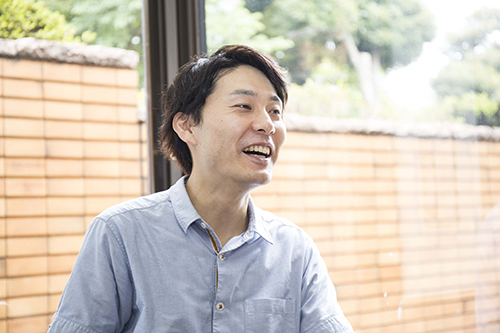
- I think Narumi-san was more of an avant-garde actor, but when I met Takeya-san in college, I remember him doing quite comical acting. Were you involved in various productions from that time?
That's right, it's Kazama Morio.
-Ah, it seems you can do both serious and comical things (laughs). But I think after that you joined a theatre company called "Banglassy". Was it really the work that attracted you?
Actually, I wanted to join Seinendan and Bungakuza. So, I actually joined a long-established new theater company, but I quit soon after. Also, around that time, I was doing comedy sketches with a writer who was providing some of the scripts for City Boys. So, I went to see Kitaro, Otake, and Saiki rehearsals, and did a little sketch with Otake.
-We often talked about how you might become a comedian, but you never decided to pursue a career as a comedian, nor did you go in the direction of more traditional modern theatre. Did you already have the feeling back then that you wanted to aim for the kind of "Kazama Morio-style theatre" that Takeya mentioned?
It may have been. Like Kazama Morio, I've been watching old movies like Itami Juzo since I was in elementary school, so I wanted to be like Morishige Hisaya (laughs). I wanted to pass on that tradition.
-So you wanted to be an actor. You've been performing at the Okazaki Art Theatre quite a bit recently, but what steps did you take to get to that point?
Before I knew it, Bangla-shi had disbanded, and I started working in insurance. At that time, I was invited by an acquaintance at Horipro to become an assistant to a big-name musical actor. Then, Horipro asked me if I would like to do a one-man play, so I put all my money into that play, quit my company, and did a play called "Money Laundering."
-In a sense, it was a one-man Takeya Kimio show.
"Money Laundering" digest video
*Please note that the sound quality of this video may be slightly poor in some places as the original data is from tape.
--A new step: Meeting young, up-and-coming directors--
Kamizato (Kamizato Yudai, Okazaki Arts Theatre) came to see "Money Laundering" and invited me to see "Five Days in March" (written by Okada Toshiki).
I had already spent all my money, quit my job, and was even scammed out of 500,000 yen by someone from work, so I was in a hopeless state and decided to start over from scratch with a one-man play, when Kamisato picked me up (laughs). From then on, Shiba-san (Shiba Yukio of Mamagoto), who had seen that performance, invited me to a play set on a train called "I Lived in a Town by a River," and from that point on, I began meeting many young, up-and-coming directors, who I am currently involved with.
In "The Return of the 16-Year-Old Who Didn't Lose His Temper," I met Shirakami-san (Momonga Complex), Nakayashiki-kun (Kakikuu Kyaku), Sugihara-san (KUNIO, Kinoshita Kabuki), Shinoda-san (Faifai at the time), and others. They are a little younger than me, but their generation is a very energetic one.
-I thought for sure that you would move on to comedy or story-based plays after "Money Laundering," so I was actually surprised to find that you went in a more avant-garde or absurdist direction. Personally, I would have liked you to appear in more comedies.
I think it was a time when the times, or rather the flow of theater, was just starting to change. In our time, there were a lot of plays that had text and drama, but nowadays there are a lot of plays that don't require much dialogue or emotion, and they're more like post-dramas.
-You've appeared in a variety of productions so far, but is there one that left an impression on you or that marked a turning point in your life?
The turning point was definitely "Five Days in March" and "The Return of the Unbothered 16-Year-Old." It was an opportunity to start again in a place that wasn't a theater in the Waseda area. I continued on that path to "Kurozuka," and in "Kurozuka" I poured everything I had learned up until then, including the way I used my body. So, for me, I want to start again with "Kurozuka."
Okazaki Art Theatre "The Absence of Neighbor Jimmy" ⒸKazuki Watanabe
-What is your motivation for continuing to work in theater and as an actor?
I think there are probably people with all kinds of ways of thinking, and some people think that when they reach my age, they'll get married and quit. But, for example, even if you just make a picture story and read it in the park, the process of creating something is really interesting... In my private life, I'm really useless, so on stage I can live properly and feel a very dense time.
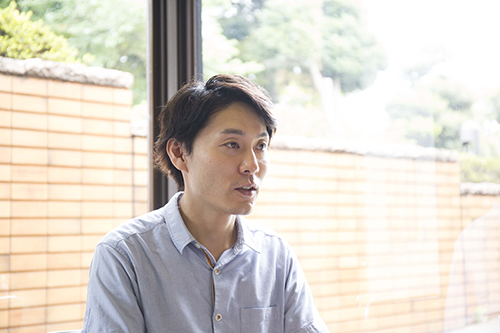
- During rehearsals you're probably told "This isn't it!" and it must be difficult at times, but still?
The most fun part is creating it. It's even more fun than the actual performance. Then, after I turned 30, my body finally started to keep up. My body is getting weaker, but I've come to understand what I should do in certain situations. I think that's because I've worked with a lot of different directors and now I understand what is required.
--Impersonation is "the courage to do it"! Another of Takeya's talents --
-On the other hand, Takeya-san is also invited to "impersonation shows".
Yes, that's fun to do. I think it's a matter of balance of expression. Makita Sports was doing "detailed and incomprehensible impersonations" and I was told "You can do something" as an opening act, with Oniyatsu Tsubaki and others there, but when I performed my material in front of the impersonators beforehand, they all overlapped and I was told "That's not my area!" (laughs) The only one who was recognized was Masao Kusakari...
-By the way, what was your Masao Kusakari impersonation like?
--Here, we will show two things: "When Masao Kusakari appears in a suspense drama as a criminal, you really think that he has some foreign blood in him" and "When his daughter makes him a hamburger steak and he is eating it, you really think that he has some foreign blood in him" (please enjoy the video later)--
(After finishing) But the quality has gone down a little (laughs). Impersonation requires "the courage to do it." It's the courage to keep going even if it's quiet.
- (laughs) That's right. You did things like 100 impersonations in a row. By the way, your specialty impersonation is completely copying the long lines of Yoshiko Mita from the movie "W no Higeki." What was your motivation for that?
The lines were really funny. Because he does theater, it was funny to see him making fun of theater a little, and even if Yoshiko Mita stumbles over her lines, it's okay because it's a long take, so that was nice. Those lines really hit home for theater people.
-I think that recently your name has become known for a slightly different type of theater and you've been doing some guest appearances, but I really like your comical side, so I'm looking forward to the impersonation show you're going to record soon.
Now we move to the studio and record "Magcal version of Kimio Takeya, Impersonation Show"! Takeya's repertoire of wonderful impersonations is packed! Please enjoy the video.
"Magcal version of Kimio Takeya, a show of imitation"
--The future of Takeya Kimio--
-Finally, please tell us about your future plans.
I'm currently working on a two-person play called "Kamifusen" (written by Kishida Kunio) with a plan to keep the actors the same but keep changing directors. The one directed by Nishio Kaori and Yamamoto Suguru finished recently, and there will be about six more in the future. There will also be an episode directed by Shirakami. Also, I'm planning to perform in a production with an older director for the first time in a while. Also, I'm planning a revival of Kinoshita Kabuki's "Kurozuka" that I mentioned at the beginning within the next two years.
-What would you like to challenge yourself with in the future?
I'd like to do anything if I get the chance. I'd also like to do more impersonations (laughs).
-You've seen Tora-san and all the old Japanese movies, but who is your favorite actor?
Naoki Sugiura, Haruko Sugimura, and Morio Kazama.
-Everyone has such a unique personality.
Most of my favorite actors have passed away, but... I get excited talking about old movies and old actors with Kinoshita-san from Kinoshita Kabuki.
But even if people don't know the original story, they still find it interesting. I think your charm is your ability to communicate with people who don't understand.
It's like people in their 20s these days have no idea who they are.
-But I think that Takeya's charm as an actor can be conveyed to many people.
That's right, my teacher (Kinoshita-san, head of Kinoshita Kabuki) and I have been talking about passing on the art of the Showa era.
-Please continue to be active in many areas. Finally, what are your recommended spots in Kanagawa Prefecture?
It's Kame-chan in Noge. The proprietress passed away, and now Kame-chan's potato salad is being passed down with all her might. Also, all the island scallions and fish dishes are delicious.
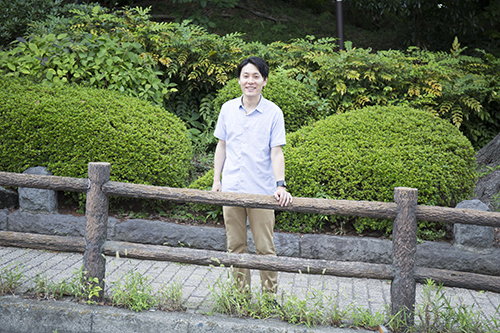
On the day of the interview, the weather was so hot that it was almost like summer, and I climbed the steep slope to the studio drenched in sweat. When I entered, Takeya, who had already arrived, quietly handed me a gift of ice cream. Takeya's casual attention to detail and the mysterious aura of making people feel happy over the smallest of things are his strong points. There are many silly private episodes that I couldn't write about here and had to cut out, and they all make you wonder why he got caught up in such a mysterious incident. However, there is no doubt that they play a part in creating the exquisite flavor of the actor Takeya Kimio.
Although it doesn't really answer any questions, I would like to conclude this article with a famous quote from the famous Showa era actor, Morishige Hisaya.
"The difference between a leading man and a supporting actor is that the life of a supporting actor is full of humanity."
Although he may look handsome, he will continue to have his own unique "flavor," and I look forward to seeing him in many different capacities in the future.
■ Future plans ■
Series: Kunio Kishida "Paper Balloon Pattern" <This event has ended.>
Venue: Atelier Sentio (4-29-10 Ikebukuro Honmachi, Toshima-ku, Tokyo)
More details will be posted at the following URL in September.
http://www.katorihidetoshi.com/kk/
(Editor's note)
I went to "Kamechan" in Noge, which Takeya-san recommended.
As I opened the sliding door, I found myself in a space reminiscent of the Showa era, filled with salarymen returning home from work. There were regulars who spoke to me enthusiastically, even though I was alone, and a beautiful young female proprietress. Looking around the restaurant, I saw the autographs of many famous people. They had yellowed a bit with the years, and I could tell that this restaurant has been loved by many people for a long time. The potato salad, island scallions, and sashimi recommended by Takeya were all really delicious, and the potato salad in particular was served in a huge portion, which made me exclaim in joy.
That day, a regular customer, a relative of a certain film director, happened to be there. We chatted for a bit and made a promise to come back. The atmosphere of the old town was so lovely that it made me feel like "If I come here, I'll see you again!" I'm sure I'll be coming back to Kamechan again.
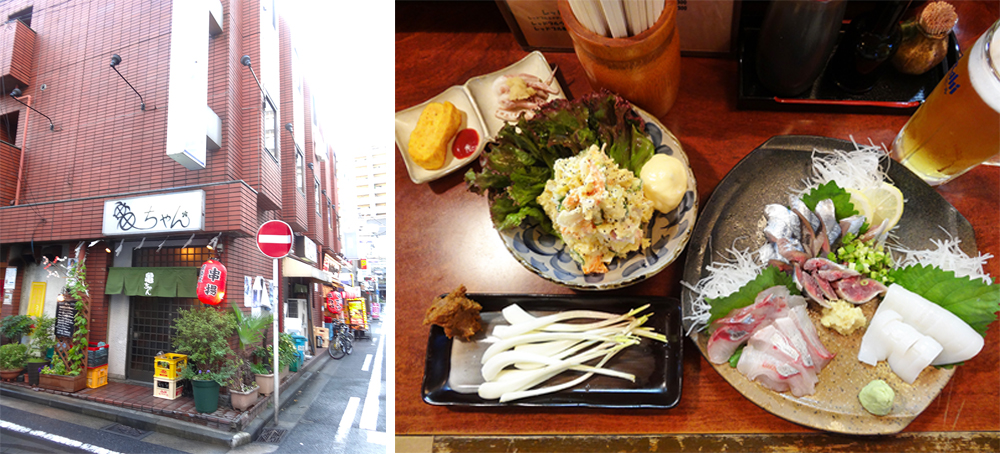
■ "Turtle-chan"
Ester Hotel 1F, 2-71-12 Noge-cho, Naka-ku, Yokohama
TEL 045(243)2510
http://tabelog.com/kanagawa/A1401/A140102/14022088/
